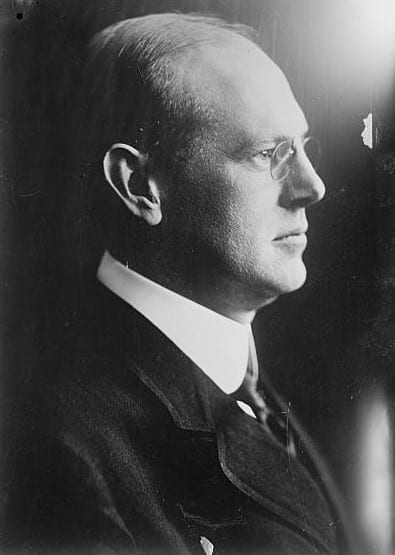
Ernest Fox Nichols served as President of Dartmouth College from 1909 to 1916. Prior to his appointment, he was a Professor of Physics from 1898 to 1903. He would later become President of MIT.
On Friday October 5th professor Ralph Gibson lectured on former Dartmouth President Ernest Fox Nichols as a part of the series of lectures for the American Physical Society’s designation of the Wilder Physics building as a historical site.
Gibson began the seminar with the Crookes radiometer. The device is an encased partial vacuum in a glass bulb with four tiny metal planes attached to a spindle. The spindle turns at varying speeds when the radiometer is exposed to different levels of infrared radiation. Scientists have attempted to explain the phenomenon of the Crookes radiometer for hundreds of years.
While it was Maxwell’s radiation theory that explained the phenomenon, Nichols was the one to prove it. Nichols first attended Kansas State Agricultural College where he met Cornell physicist Edward L. Nichols at a lecture. Nichols later finished his education at Kansas State and pursued his graduate degree at Cornell University. Ernest Nichols, while working with Edward Nichols, contributed to the development of the most accurate galvanometer of the time.
Later during his years as a professor of Colgate University, Ernest Nichols developed his own radiometer. Nichols constructed the device out of two extremely small mirrors balanced perpendicularly to a vertical quartz string. When a beam of infrared waves struck one of the mirrors, the device would turn. Nichols then calculated the energy of the beam based on the angle the contraption turned.
Nichols went on to become a Dartmouth professor, and with his colleague Gordon Hull he invented the methodology needed to measure the energy emitted by distant stars. Nichols adjusted his radiometer to where he was able to accurately measure the energy from a candle held three miles away. From their work, Nichols and Hull proved that light exerted pressure and proved Maxwell’s last theory.
Dartmouth College inaugurated Ernest Nichols as their tenth president in 1909. He then resigned from his presidency to pursue physics as a Yale professor. Nichols received gratitude by then U.S. Secretary Franklin Roosevelt when he developed a mine triggered by a magnetic field. In the early 1920s Nichols was inaugurated as president of MIT, and then pursued his scientific interests once again for General Electric until he resigned due to a heart condition.
Nichols modified his radiometer once more to measure short electric waves to a wavelength of 0.22 mm. This discovery helped scientists merge the gap between infrared waves and visible light in the electromagnetic spectrum. Nichols passed away in 1924 in midst of presenting his findings at the National Academy of Sciences.
Bain News Service Prof. E. F. Nichols. 1909. Library of Congress, Washington D.C. Prints and Photographs Online Catalog. Web. 8 Oct. 2012
Leave a Reply